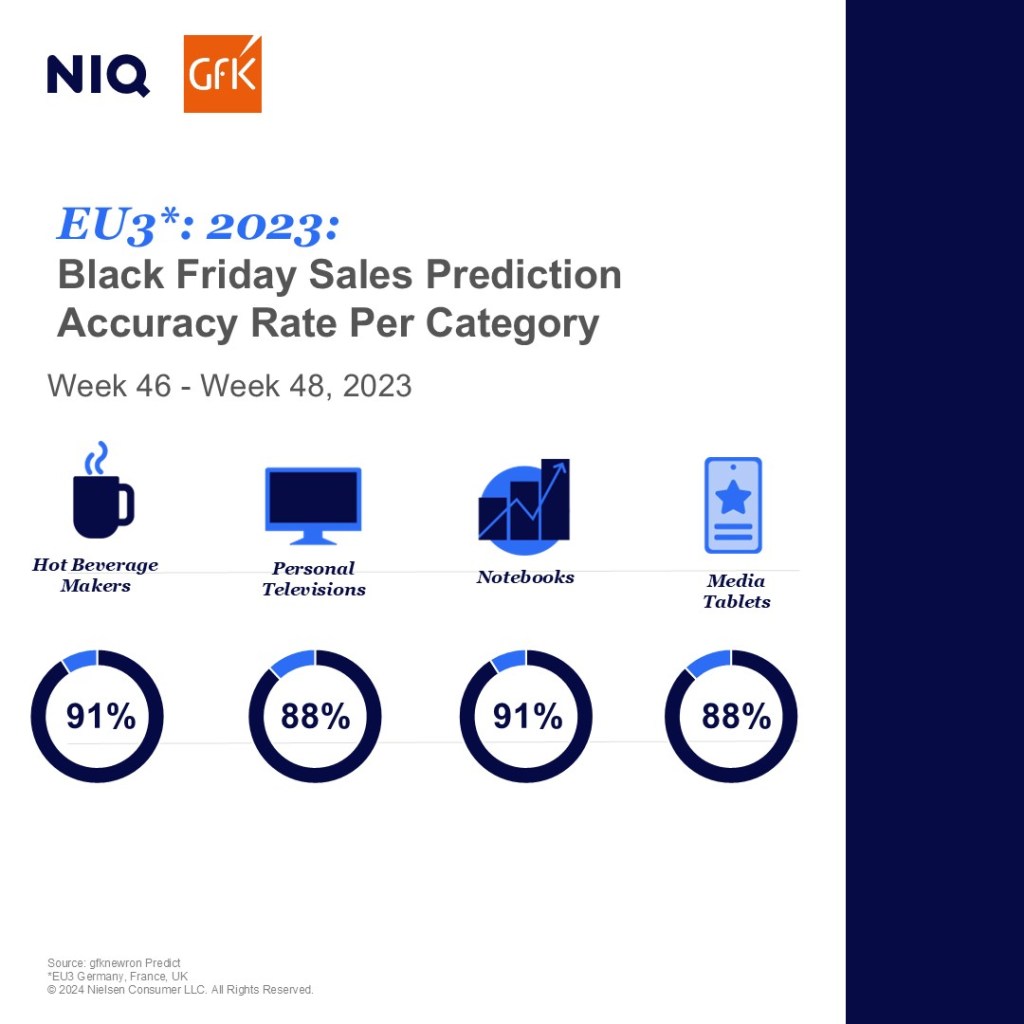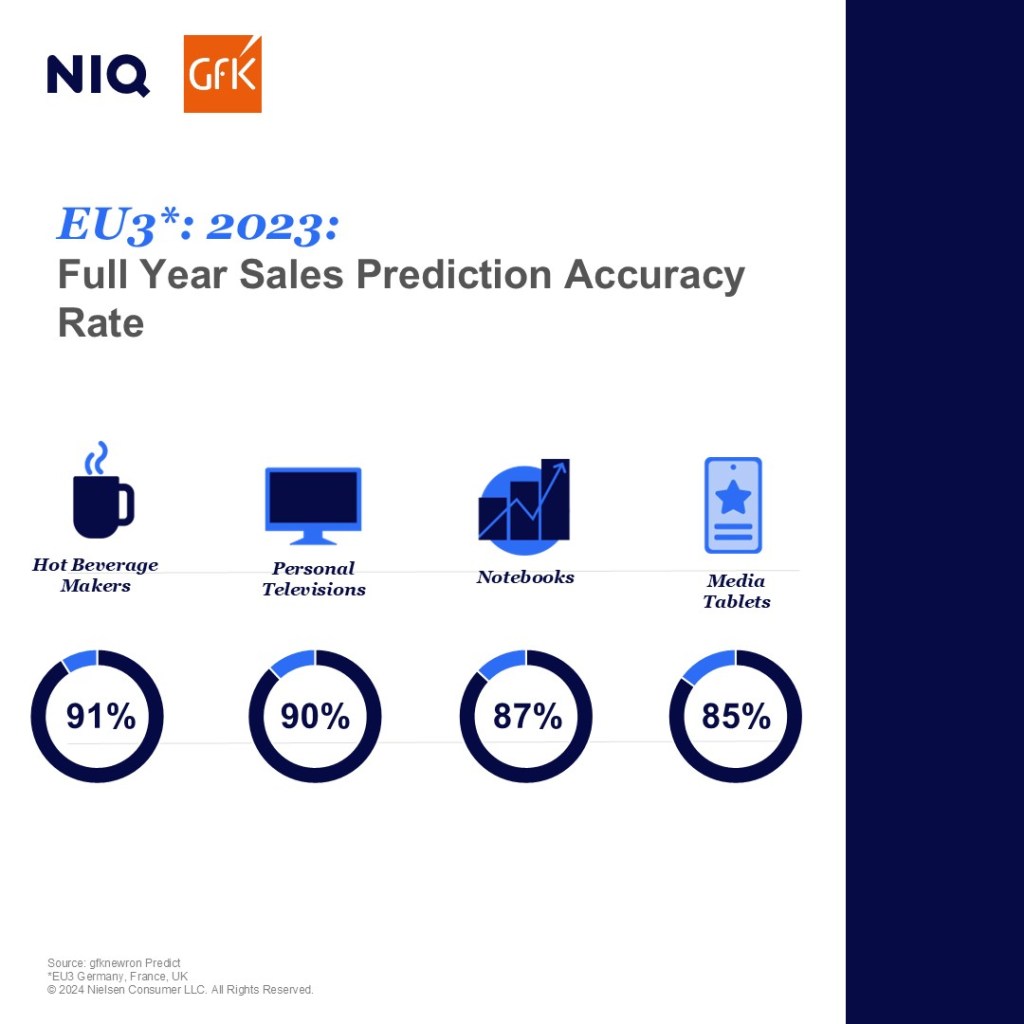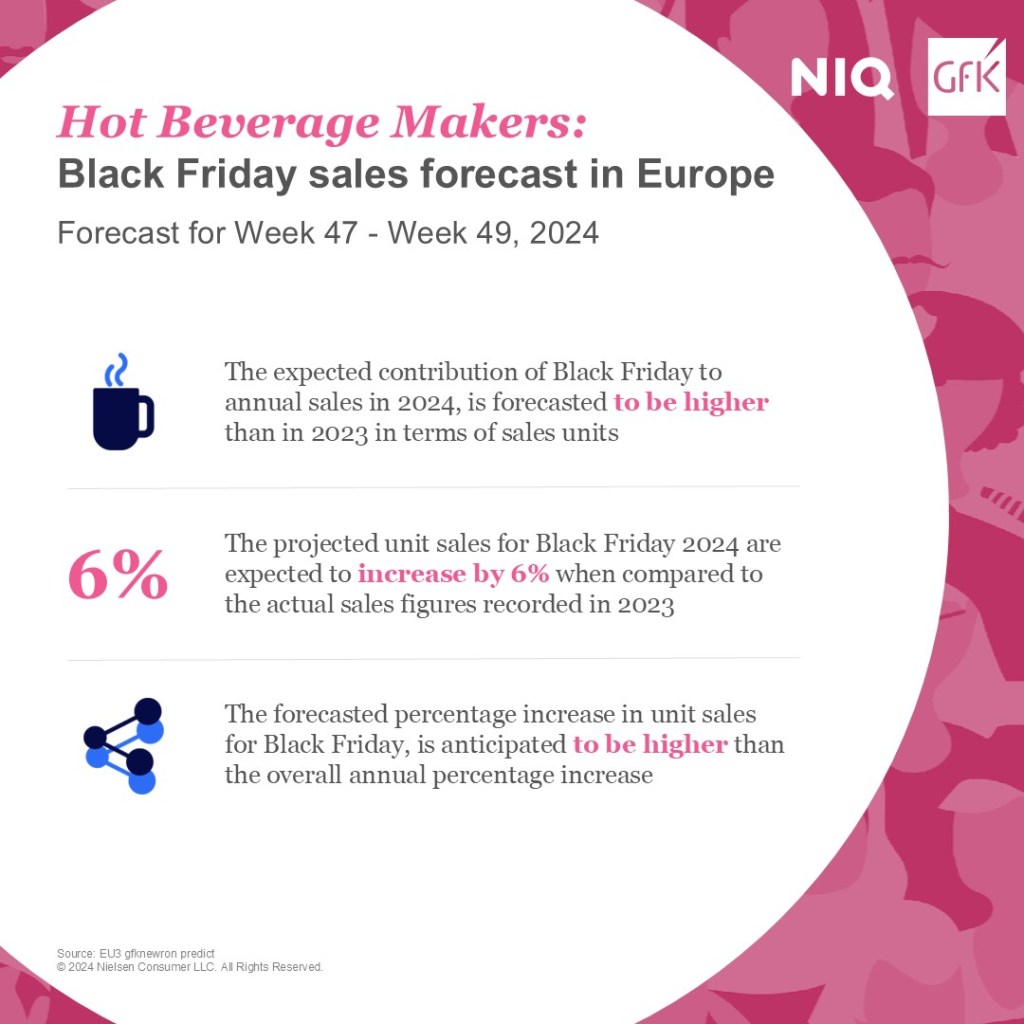Introduction
The world is being transformed with astonishing breakthroughs in Artificial Intelligence (AI) which are revolutionizing our daily lives. Millions of people now use tools like Generative AI to find answers to questions, perform their work, learn new skills, or simply for fun. These advances are reshaping our personal lives and redefining entire industries.
In this blogpost, we will explore how these exciting technologies can be used in Predictive Analytics and Market Forecasting to help businesses to stay ahead of the curve. And we will look at how gfknewron Platform, with its dedicated Predict Forecasting solution, leverages AI to provide an in-depth view of the future of the Tech & Durables industry.
Evolution of Forecasting Techniques
Forecasting involves predicting future data, such as sales, events, or trends, using inputs like historical data and economic indicators. This process employs statistical algorithms, machine learning techniques, and other methods. Forecasting is crucial for businesses to anticipate consumer demand, manage inventory levels, optimize supply chains, and make strategic decisions.
Forecasting techniques have evolved from simple analyses of historical trends or basic statistical models to more complex and sophisticated approaches powered by Machine Learning and Deep Neural Networks. Traditional techniques like regression analysis or time-series models still provide valuable insights but may struggle with the vast amount of data, rapid market changes, and non-seasonal trends that define the modern business environment.
Introducing AI and Machine Learning in Forecasting allows us to harness massive datasets and numerous variables more effectively. These models constantly learn and improve with new data, becoming more accurate over time. They can detect complex or hidden patterns between multiple product groups and relevant markets, identifying relationships in market behavior or correlations and trends that might otherwise go unnoticed. This results in more dynamic and accurate predictions of future market conditions.
AI-Powered Forecasting in Action
It’s well-known that predicting the future with 100% certainty is impossible. But deep neural network (DNN) models can be trained on diverse data sources to provide a competitive advantage when interpreting outputs. A reliable, clean dataset with substantial historical data is necessary for any model to produce meaningful, actionable predictions.
In the Tech & Durables industry, one common use case is predicting market behavior during major events, such as the World Cup, the Summer Olympics, Christmas, Amazon Prime Days, Black Friday, or Lunar New Year. A deep neural network model can decipher and correlate these events, where traditional time-series statistical models may underperform when analyzing events with varying dates. DNNs can see through seasonality effects, understand the impact of the event itself, and output forecasted data for the correct date of the event each year.
gfknewron’s AI-Powered Forecasting tool has demonstrated its effectiveness in handling significant events like Black Friday. Attempting a week-on-week forecast is always challenging, because:
- Black Friday often extends into previous weeks as promotions build up to the final date. Cyber Monday can also influence trends and sales in the following week.
- Product categories respond differently across countries, shaped by local market behaviour and consumer preferences.
- A non-seasonal event like the FIFA World Cup, which took place in November and December 2022 instead of its usual summer schedule, can affect customer behaviour, such as increasing demand for TVs

How gfknewron’s AI-Powered Forecasting tool performed in certain categories in EU3 countries last year

Full year accuracy of 2023 in the same categories.
Building on last year’s effectiveness of the forecast we looked at the 2024 Black Friday numbers.

Personal Televisions: 2024 Black Friday Sales Predictions in Europe

Hot Beverage Makers: 2024 Black Friday Sales Predictions in Europe
By reviewing the performance of gfknewron’s AI-Powered Forecasting tool in certain categories in EU3 countries last year and this year, it is evident that users have the opportunity to gain an early glimpse into the future.
This allows them to analyze and plan their stock and promotions during Black Friday for various product groups and important sub-product groups that lead the market. This is just one of many use cases for forecasting.
How can we measure the accuracy of forecasts?
To evaluate a deep learning model we must understand how closely the model’s predictions match the actual data, and we certainly expect it to perform better than simpler models. Various scientifically proven metrics and methods can be used to evaluate the model’s performance using past data and real-world scenarios. Since each metric and method serves a different purpose, with its own advantages and limitations, using a combination provides a more comprehensive understanding of the model’s performance and facilitates tuning and improvement.
Some of these metrics include Root Mean Squared Error (RMSE), Mean Absolute Percentage Error (MAPE), Mean Absolute Scaled Error (MASE), and Weighted Quantile Loss (WQL), while some common methods include Backtesting or Cross-Validation techniques like Walk-Forward Validation.
gfknewron’s AI-Powered Forecasting tool is measured against multiple metrics, following a robust, rigorous, and scientifically validated evaluation methodology. It demonstrates an impressive average accuracy rate of approximately 90% across supported markets.
What’s Next?
As deep learning continues to evolve, the possibilities are truly limitless. The potential to incorporate any kind of structured or unstructured data, such as social media sentiment, web traffic data, weather data, product reviews, or customer feedback, will enable businesses to anticipate market trends in real-time, predict consumer behavior for specific products or customer types accurately, and make more informed and successful tactical and strategic decisions.
These technologies are essential for driving growth and helping businesses stay ahead of the competition. Companies that embrace them will be ready for a future where data-driven AI insights define success.
Footnote
Definition of terms:
Artificial Intelligence (AI) is the technology that intends to simulate human intelligence by machines. AI enables a machine to perform tasks usually requiring human cognition, such as understanding language, learning from data, identifying patterns, solving problems, and making decisions.
Machine Learning (ML) is a subset of AI that focuses on training machines with vast amounts of data to identify patterns and produce various outputs without any additional human intervention. One of the most common types of machine learning algorithms is called a neural network.
Deep Learning (DL) is a subset of Machine Learning that uses deep neural networks (DNNs) to simulate how the human brain processes information and makes decisions.
Generative AI (Gen AI) are deep learning models with the ability to create new and original content such as text, images and videos.




